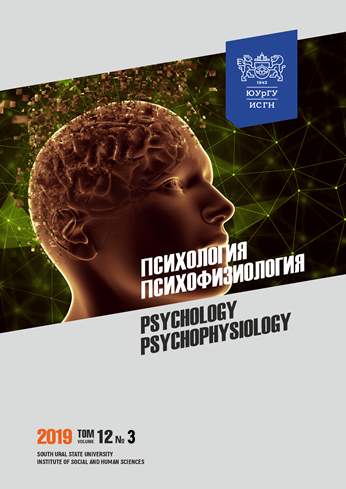STYLE CHARACTERISTICS OF BEHAVIOR SELF-REGULATION IN STUDENTS WITH VARIOUS VICTIMITY
Abstract
Aim. In the present work, victimity is considered as a psychological deviation manifesting
in specific behavioral responses that characterize the type of potential victim. The emphasis is
made on the necessity of taking into account a realized victimity of a person, the formation of its
adequate forms and its correction at the stage of professional training. The article is aimed at establishing
the style characteristics of behavior self-regulation in students with various victimity.
Materials and methods. Based on the analysis of the results obtained according to the “Realized
victimity” scale (the “Tendency to victim behavior” questionnaire) all subjects were divided into
two groups: an average (n = 36) and below-average (n = 53) victimity. The data on victimity, behavior
self-regulation and emotional intelligence in students of the pedagogical university were
obtained using the corresponding questionnaires: “Tendency to victim behavior”, “Style of behavior
self-regulation”, “Emotional intelligence”. Results. In the structure of students’ victimity,
high values are observed on scales that assess the tendency to addictive and helpless behavior, to
aggressive victim behavior, to self-damaging and self-destructive behavior, and to non-critical
behavior. When comparing groups of students with various victimity, the following features were
registered expressed in the differences in the style characteristics of behavior self-regulation (in
the implementation of modeling, assessment and flexible interaction); in the absence of differences
in the parameters of emotional intelligence. Conclusion. Features of behavior selfregulation
in students are determined by their victimity. Subjects with low victimity are twice as
likely to show high behavior self-regulation compared to respondents with average victimity. The
identified risk group of students who are prone to addictive and helpless behavior requires special
measures to accompany their social adaptation at the university. When it comes to the formation
of professional competencies of the future teacher, it is advisable to include in the program of
elective courses the analysis of the results of studies of victimity in students, pedagogical workers,
as well as ways to correct victim identity deformation.
Downloads
Copyright (c) 2019 Psychology. Psychophysiology

This work is licensed under a Creative Commons Attribution-NonCommercial-NoDerivatives 4.0 International License.



